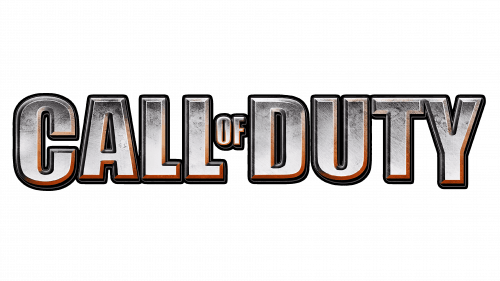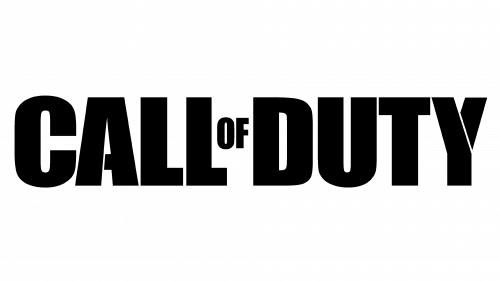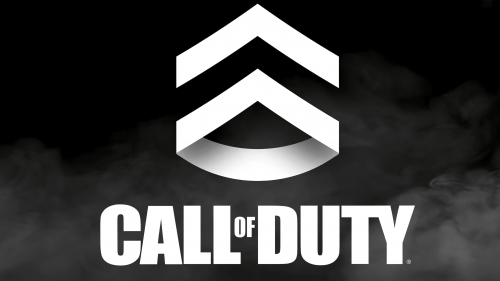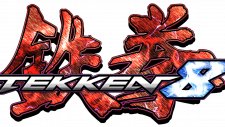Call of Duty Logo
The contribution of Call of Duty in the video game industry is great. This game has been entertaining millions of players for almost 20 years, who really enjoy this first-person shooter. Since the release of the first game in 2003, this franchise received over $15 billion in revenue. The owner and creator of the game series is Activision.
Meaning and History
Call of Duty is largely the game about the warfare. Each game put players in various scenarios: from WW2 to Cold War to futuristic battles. The name is simply reflecting this fact. The first game has been released in 2003, and the new releases followed almost every year.
2003 – 2007
The initial logotype simply relayed the name of game/franchise. The words were styled as metal, which was supposed to inspire war without adding too much nuance. They illuminated this one heavily, and there were slight scratches all over the place.
2007 – 2008
With the announcement of Call of Duty 4 Activision introduced another logo for their game. It was lessened in compare to the previous version, and the color was changed to the metal green.
2008 – 2009
The logotype for the following game, labeled ‘World at War’, had the iron-gray color with a slight rusty tint on the edges.
2009 – 2010
The Modern Warfare 2 logotype consisted of white letters with a slight green outline. It was, after all, a continuation of the 2007 game.
2010 – 2011
This logo features the words “CALL of DUTY” in a bold, sans-serif typeface that conveys strength and a no-nonsense attitude. These qualities are appropriate for the title of a well-known video game franchise centered around warfare and military action. The lettering is black, creating a strong contrast against a white background, which ensures visibility and recognizability from a distance.
There’s a distinctive design choice where the word “of” is set in a smaller font and lowercase, nestled between “CALL” and “DUTY,” which are in all caps. This contrast in font size creates a visual hierarchy, emphasizing the action-oriented words, while “of” serves as a connective element, balancing the composition.
The letters exhibit slight distress, with edges that appear worn or eroded, which might represent the wear and tear of battle gear or the rugged nature of a soldier’s experience. This detail adds to the immersive experience of the game, suggesting that what lies within is not just a game but a gritty and intense simulation of warfare.
Overall, the logo is straightforward yet effective. It represents the franchise with a visual identity that speaks directly to its core audience of action and adventure gamers. It conveys the franchise’s legacy of immersive military storytelling and the high-octane experience that awaits players.
2011 – 2012
In 2010 Activision introduced the fully black logotype of the Call of Duty series, which was being used by the Modern Warfare 3 and Black Ops games. They also made it look a little shabby and worn-out.
2012 – 2013
Call of Duty: Ghosts brought us probably the most curious logotype of the entire game series. It was made with the white inscription on the same white background. A grayish outline was added to the outside to let us see the logo properly.
2013 – 2014

They barely change the logo with every new game, although they obviously changed added the titles to each of them to make them stand out. The 2013 logo was slightly thinner – especially for the ‘for’ part in the middle. The rest was just polished and scraped a bit.
2014 – 2015

The only real change for the 2014 logo was the addition of a horizontal cut for some letters. Design-wise, it’s just a thin white line, although it’s obviously supposed to be some sort of ‘damage’ aesthetic.
2016 – 2017

The 2016 logo didn’t have a horizontal line across it, although they did add several vertical cuts on some letters – most notably, the ‘A’, and the ‘U’ – you can see that some parts as if fell off them.
2017 – 2018
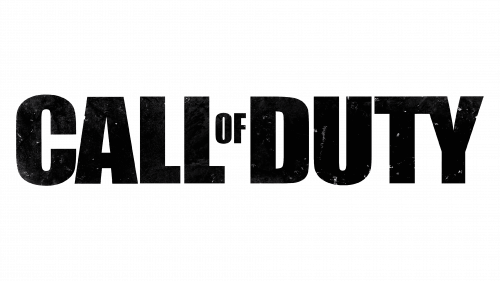
The 2017’s logo shtick was that it was gritty and dirty. It looks like someone touched a newly-polished floor excessively. Otherwise, it was a completely normal bunch of letters.
2019 – Today
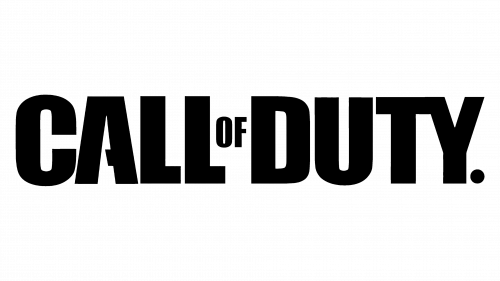
There was nothing unordinary on this logo, except for two parts: a dot on the end and a little cut on the central bar in the letter ‘A’.
2023 – Today
The revamped Call of Duty emblem is the embodiment of forward-thinking modernization, coupled with meticulously curated typography. In the absence of graphic illustrations, the designer accentuates a meticulous overhaul of the font, exchanging uniformity and sleekness with intricate elements. The characters “C,” “A,” “O,” “D,” and “U” exhibit distinct chamfered edges, enriching the overall design with additional angles and conveying the perpetual evolution and vitality inherent to the game franchise.
Nonetheless, the most pronounced metamorphosis is embodied in the glyph “Y”—it adopts a truncated descender and exclusively vertical apexes, enhancing visual impact and infusing individuality. The pronounced dot, once juxtaposed with the “Y,” has been omitted, bestowing additional clarity and openness upon the emblem. Noteworthy is the isolation of “Y,” which no longer coheres to the adjacent “T,” instilling a renewed sense of equilibrium and coherence within the logo’s visual domain.
Every letter has evolved to resonate more with rectangular forms, underscoring the brand’s robustness and cohesion. Such a metamorphosis bears witness to daring and ingenuity, symbolizing Call of Duty’s unwavering commitment to excellence and distinctiveness in the realm of gaming. The revisions are indicative of a holistic and intentional evolution, reflecting a conscious effort to maintain relevance and alignment with contemporary aesthetic sensibilities and the series’ foundational ethos, all while preserving the intrinsic spirit and timeless essence of the illustrious gaming saga.
Emblem and Symbol
There are lots of secondary icons used by various games. They help players quickly identify them. For instance, some used US Army stars for better identification. Others, like Black Ops sub-series, use their own distinct icons. The second game had a Roman number ‘2’, and the third one opted for the Roman ‘3’, naturally.




